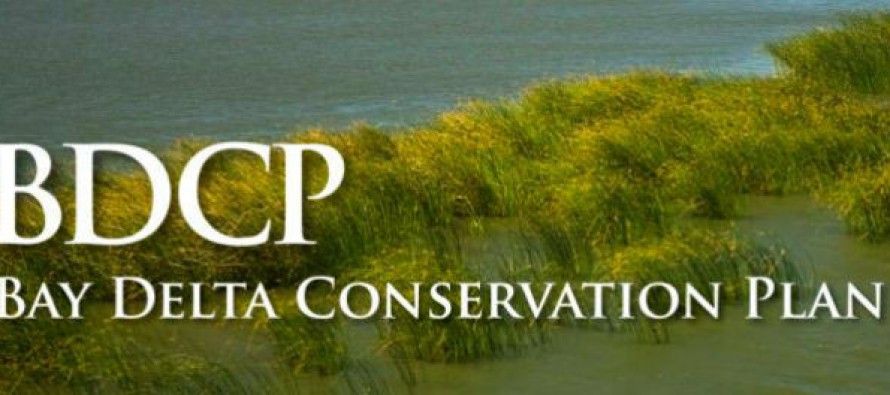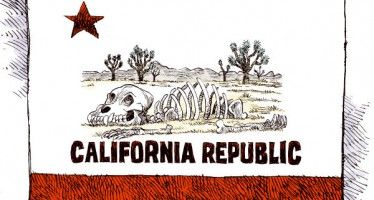Bay Delta Plan could wipe out farmland values

 Along with the rains finally drenching California in recent days have come clouds over Gov. Jerry Brown’s Bay Delta Conservation Plan. Published on the website of state Treasurer Bill Lockyer, a new report by the California Debt Advisory Commission questions the BDCP’s financing with municipal bonds.
Along with the rains finally drenching California in recent days have come clouds over Gov. Jerry Brown’s Bay Delta Conservation Plan. Published on the website of state Treasurer Bill Lockyer, a new report by the California Debt Advisory Commission questions the BDCP’s financing with municipal bonds.
On Dec. 10, water economist Rodney Smith, Ph.D., president of Stratecon Inc., analyzed the CDAC report about whether the BDCP was a “doable deal.” Specifically, he looked at what the plan would cost the Westlands Water District in the Fresno area. Westlands provides water to 700 family-owned farms that average 875-acres in size.
Smith estimated the debt burden of the BDCP would entirely wipe out cropland values and diminish permanent planting land values by 50 percent:
- The Westlands Water District would end up paying 36.44 percent, or $3.74 billion, of the BDCP debt. That’s a 16-fold increase in Westlands’ debt. (Note: debt is not the same as total project costs.)
- BDCP debt obligations would equate to $6,585 per acre of Westlands’ croplands. The California Association of Farm Managers and Rural Appraisers’ 2014 Trends in Agricultural Land and Lease Values reports cropland values for the west side of Fresno County are $5,000 to $8,500 per acre. Thus, the BDCP would exceed the current average market value of Westlands’ croplands per acre.
- The BDCP debt burden also would also equate to up to 50 percent of the value per acre of permanent croplands that do not need replanting (e.g., almonds).
- The BDCP debt burden would be totally unaffordable when it has to fallow one fourth of its land once every decade as part of its rotational cropping plan.
- The BDCP would mostly yield additional water in wet years when it is less needed; and very little in dry years, making the economics even more unsustainable.
The average value of California farmland in 2012 was $7,200 per acre. California has about 8.56 million acres of irrigated cropland. Thus, the total value of irrigated farmland would be about $61 billion.
Many risks
According to Smith’s analysis of the report, the above gloomy analysis of the economics of the BDCP doesn’t even take into consideration the project’s many risks, such as:
| Construction cost risk: | The average cost overrun on megaprojects is 34 percent. |
| Construction delay risk: | The project will run into a “geologic lottery” of unknown soil conditions for tunnel drilling, lawsuits and the project is already three years behind in planning. The 2025 start date was moved to 2028. |
| Regulatory risks: | There is no upfront assurance that the BDCP tunnels and restored Delta would be operated flexibly enough to meet the co-equal goals or provide enough water for farmers with secondary water rights. |
| Climate change risk: | There is a 50 percent chance that natural, not man-made, sea levels would rise due to subsidence or earthquake resulting in lower water supplies. |
| Interest rate risk: | Bond interest rates would not be based on today’s historic low rates but higher, uncertain rates that could jump from $1.576 billion to $2.502 billion per year. |
However, the biggest risk cited in the CDAC report was drought. If water contractors “opt out” of paying bonds in low-water years, and shift to cheaper groundwater, this would result in uncertain revenues to pay the bonds (page 7). Farmers are obligated to continue to make bond payments through their water rates even if they get no water. It is a certainty that farmers will shift to groundwater during drought.
The magnitude of the bond debt would be $55.4 billion (inflation-adjusted dollars). As the CDAC report put it, “By any measure, this is an extraordinarily large amount of bonds to be issued for a single project and would be one of the most expensive infrastructure projects ever taken in California and the United States” (page 42).
Reaction
Due to all of the above factors, Smith foresees an unfavorable reaction to financing the project in the bond market.
Smith says the BDCP needs to be downsized to a “municipal and agricultural water user project.” But that isn’t likely.
Along with the high-speed rail project, the BDCP is part of what Brown calls California’s “rendezvous with destiny.” He has branded doubters “dystopians and declinists” with a “noir view of California.”
So any clouds over the BDCP are unlikely to deter him
Related Articles
Draconian water plan unveiled
MAY 3, 2010 By SUSAN M. TRAGER Water is the lifeblood of California. Throughout the state’s history, it has formed
How to save state parks from closure
May 11, 2012 By Joseph Perkins A pair of Northern California lawmakers unveiled a proposal this week to avert the



